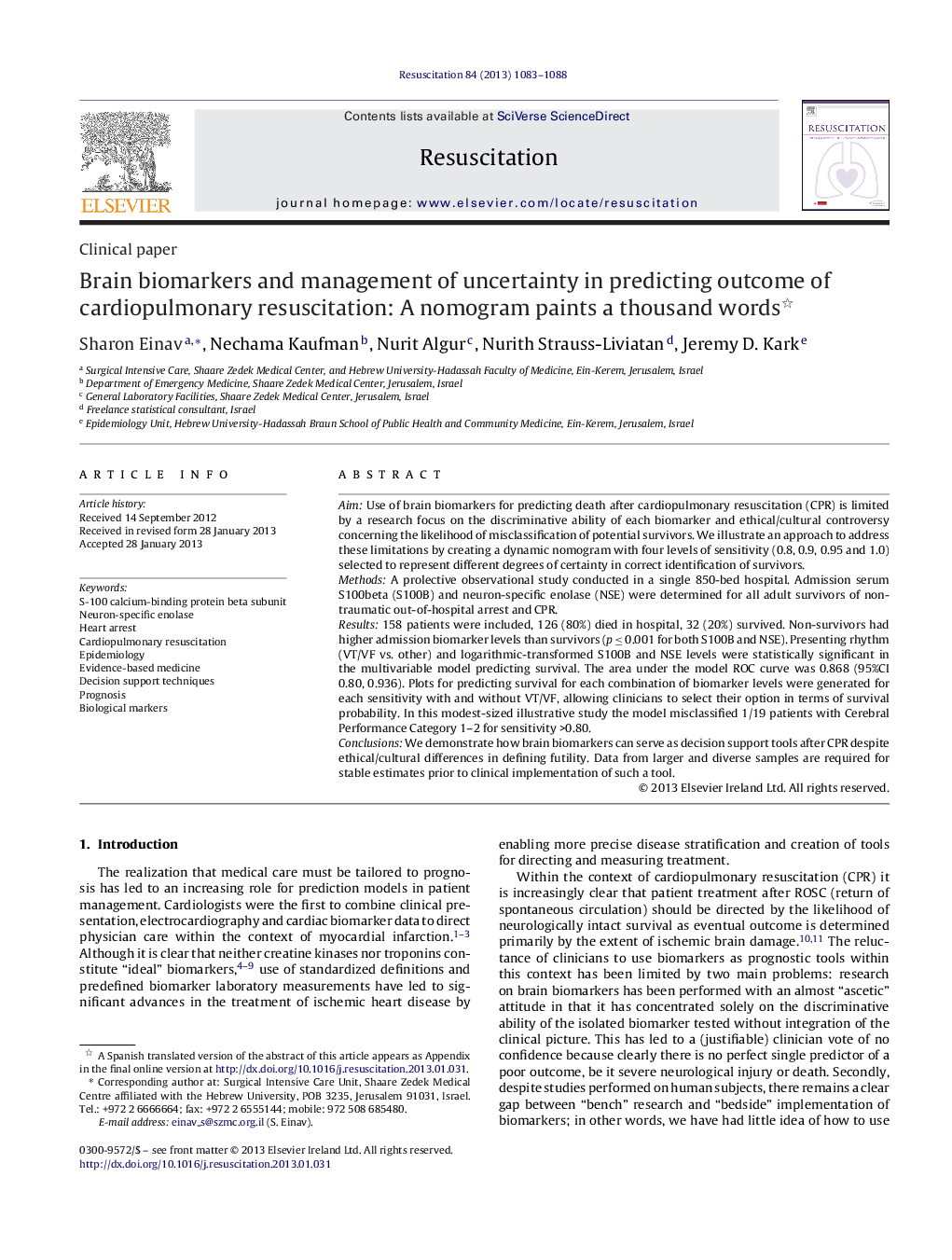| Article ID | Journal | Published Year | Pages | File Type |
|---|---|---|---|---|
| 3008250 | Resuscitation | 2013 | 6 Pages |
AimUse of brain biomarkers for predicting death after cardiopulmonary resuscitation (CPR) is limited by a research focus on the discriminative ability of each biomarker and ethical/cultural controversy concerning the likelihood of misclassification of potential survivors. We illustrate an approach to address these limitations by creating a dynamic nomogram with four levels of sensitivity (0.8, 0.9, 0.95 and 1.0) selected to represent different degrees of certainty in correct identification of survivors.MethodsA prolective observational study conducted in a single 850-bed hospital. Admission serum S100beta (S100B) and neuron-specific enolase (NSE) were determined for all adult survivors of non-traumatic out-of-hospital arrest and CPR.Results158 patients were included, 126 (80%) died in hospital, 32 (20%) survived. Non-survivors had higher admission biomarker levels than survivors (p ≤ 0.001 for both S100B and NSE). Presenting rhythm (VT/VF vs. other) and logarithmic-transformed S100B and NSE levels were statistically significant in the multivariable model predicting survival. The area under the model ROC curve was 0.868 (95%CI 0.80, 0.936). Plots for predicting survival for each combination of biomarker levels were generated for each sensitivity with and without VT/VF, allowing clinicians to select their option in terms of survival probability. In this modest-sized illustrative study the model misclassified 1/19 patients with Cerebral Performance Category 1–2 for sensitivity >0.80.ConclusionsWe demonstrate how brain biomarkers can serve as decision support tools after CPR despite ethical/cultural differences in defining futility. Data from larger and diverse samples are required for stable estimates prior to clinical implementation of such a tool.
